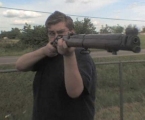ORIGINAL: madmickey
What was the kill ratio of P51d versus Fw190D9?
Actually I think it was in the negative range, but don't take my word on it as no immediate sources back up my position. I recall reading somewhere quite a long time ago that the Fw190D9 got a K/D ratio over 1 vs the P51 but I can't recall where (and it wasn't on the net anyways).
In any case, it's irrelevant. In 1944 most german fighter pilots were so untrained that they didn't know even how to keep their plane from slipping because engine torque while almost every P51D rider had a good deal of training, and in the most cases, experience. Under such circumstances, and given the fact that the D9 came only in noticeable numbers from September 1944 onwards, Kill ratio is an extremely misleading way to qualify the quality of an aircraft.
ORIGINAL: Nikademus
The Ki-43, at it's time of introduction was a fine plane, but one with a limited shelf life given it's top rated speed and light armament. To say that the plane was rubbish is a gross exageration.
heya nik!

The Ki-43 at the time of its introduction was obsolescent. It could be a dangerous foe in a close encounter, true, but as soon as the allied fighter pilots learnt not to close fight them, the Oscar stopped being a real menace.
Its success was not meerly due to it's dogfighting capabilities but as with the Zero because of a combination of it's positive attributes which included agileness, quick acceleration and good handling qualities. The centerline armament also aided the Japanese gunners in lining up their targets and it was superior to the Hurricane (it's principle opponent) in vertical manevuering. I recall reading up on a P-40 driver's accounts over NG...and in his opinion he considered the Oscar (the IIB version) to be a more dangerous opponent than a Zero because a Zero had wing mounted cannons with limited ammo. Harder to get hit with....the Oscar on the other hand had two .50cal (equiv) guns mounted centerline and could potentially fill your plane with many hits in a short space of time.
I agree on the centrally mounted weapons, but I more or less disagree with anything else. Mostly because if Oscars were obsolescent in 1941-42, the P40s were never anything much better than that...I'd say that even a Sopwith Pup was dangerous for a P40 (hehehehe

) so an Oscar should be an enemy to fear

.
Now seriously and jokes aside. I'm not fan of the Zero either, and I've always said that if the Zero is the myth it is, it's because it excelled against old and badly flown fighters. But the Zero never achieved air superiority against the F4F, and the F4F was by any standards a quite mediocre fighter performance-wise for 1942. In the end the Zero wasn't exactly the best plane around.
Finally, that a fighter was better than the Hurricane in the vertical plane isn't something new

. Every enemy that little plane met was vastly better in the vertical (even a P40 was!!!), so...

Using energy tactics would indeed be the best general tactic to use against an Oscar but setting up such a situation is not as easy to do as is often suggested. Much depended on the initial setup. A key difference in the fighting over Malaya was the absense of an early warning net. This often did not allow RAF units to gain tactical advantage (i.e. altitude advantage) and often the Japanese could catch the slow climbing Allied planes and bounce them. As with the Zero, the Oscar was not as good a diving platform as their opposites, but that doesn't mean it couldn't dive or use energy tactics itself.
in fact, it couldn't, Nik. The Ki-43's ailerons were uncontrolable at high indicated speeds. The stick forces were so high that no pilot was able to bank the plane in a high speed dive. Under such circunstances, hitting anything in BnZ style was pretty much impossible. Flying an Oscar you really didn't have too much choices...you had to turn...and you had to turn. Dive&Zoom tactics weren't appliable if you actually wanted to hit something

.
That without forgetting that in the pull-out of the dive the Oscar's pilot should be QUITE careful on the elevator input he applies...because if he pulls out too sharply he could lose his wings and lawndart his wingless rice paper plane

.
As I said if I was in any plane of the allied arsenal and had an Oscar over me all I had to do was to wait until he dived on me, bank towards his direction, and start diving. For the time he has recovered from his dive, I'm far enough to flee.
Of course, if you got a Ki43 stuck at 100m on your tail, you'd be in deep doo-doo. But that was true for EVERY fighter plane of WW2...so that aren't break news either

I think some of the japanese fighters were among the best of the war...the Ki44, Ki84, J2M or N1K2 were superb designs. But the Ki43 wasn't up to the task.


